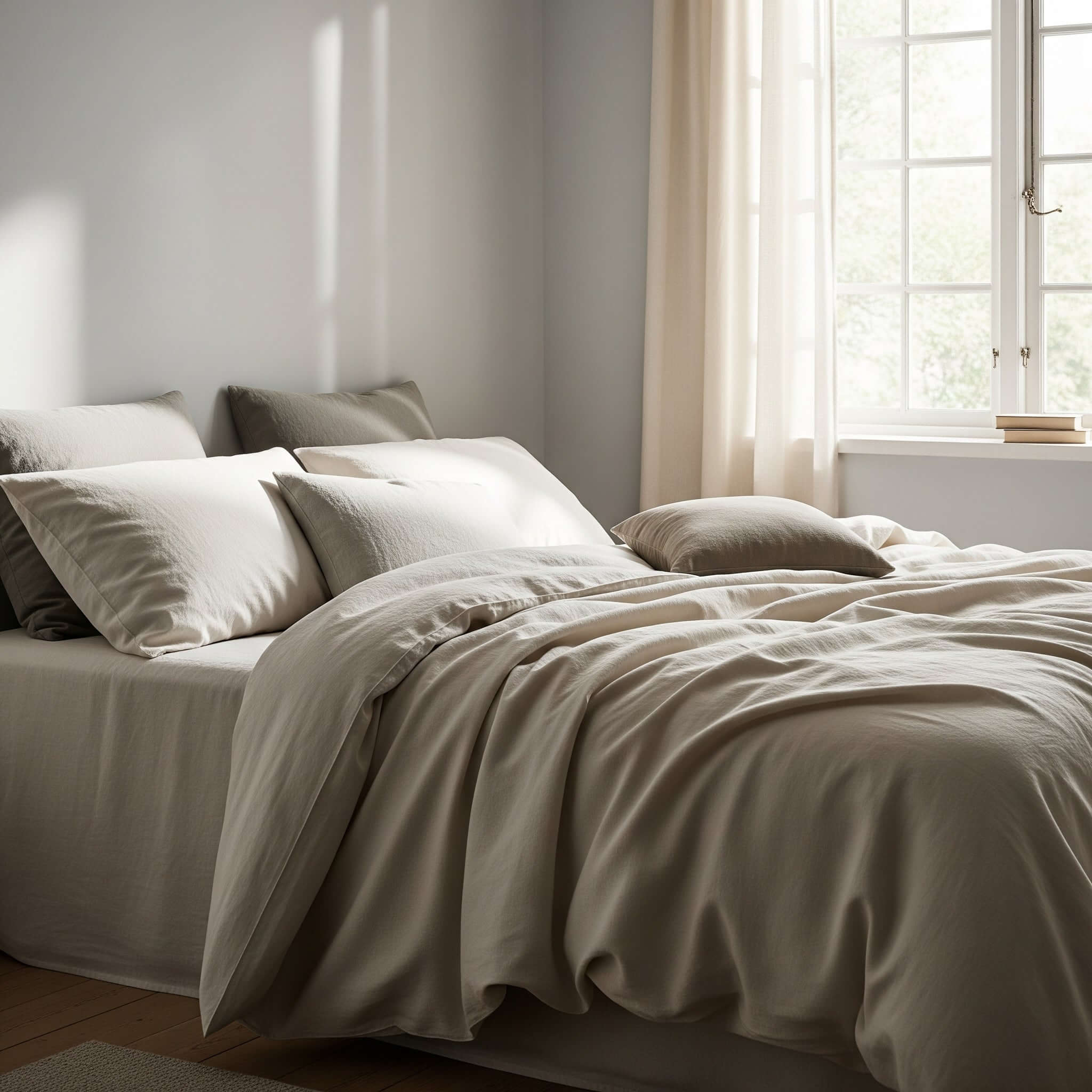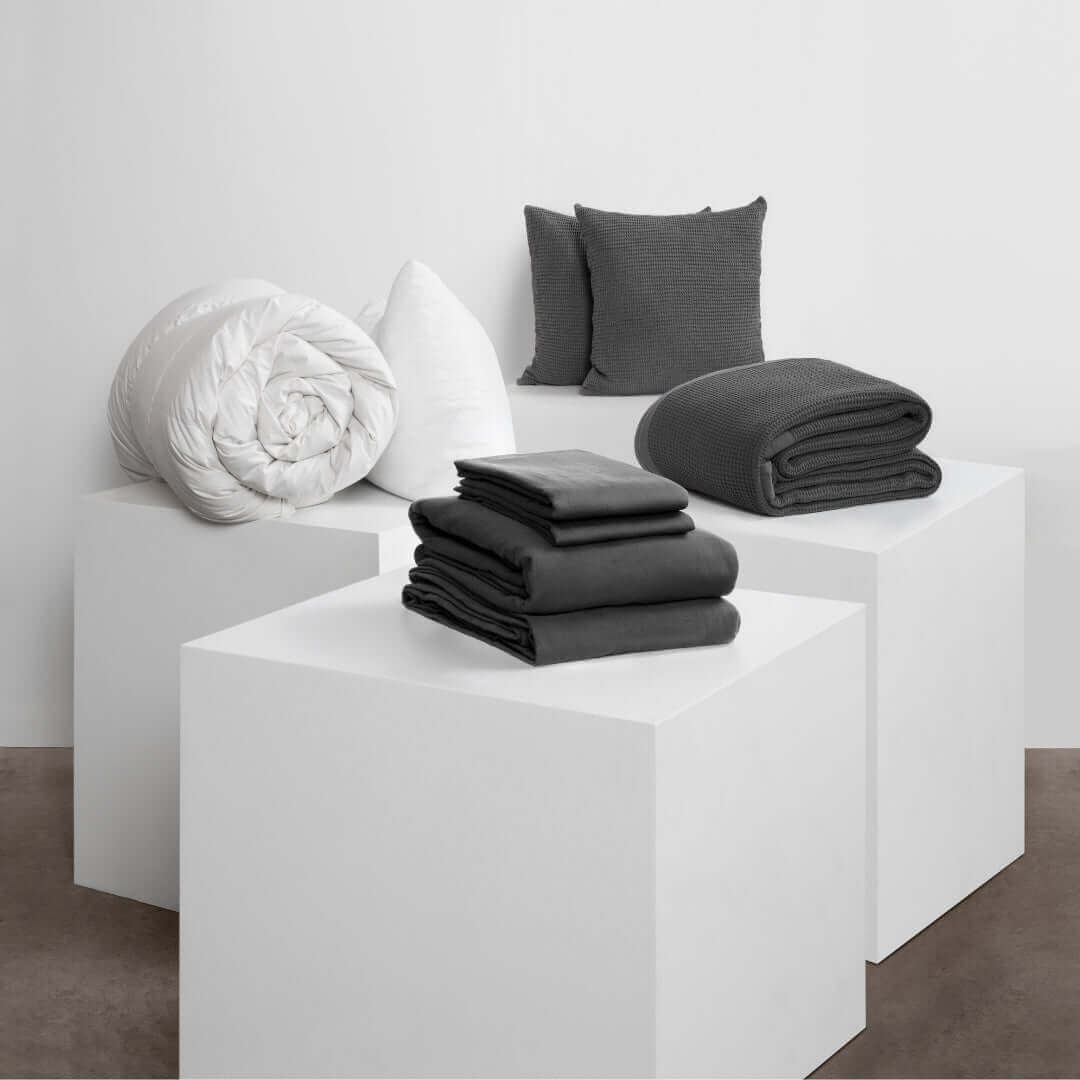Following this year's biggest wellness trend, it’s becoming increasingly important for our homes to be a place of inner peace. We’re all too often looking for somewhere to escape after a long day at work, even if that has been from your WFH set-up. That’s why finding ways to wind down well, away from the chaos of the outside world, starts at home. Specifically, our bedrooms make the ultimate personal pamper zone. As the place where you start and end your day, your sleeping quarters should be a refuge for self-care and satisfactory sleep. Yet, we all understand that having a room that feels like a private getaway may only feel like a dream…
To help this become a reality, we spoke to three holistic experts for their tips on creating a zen bedroom for cloud-like sleep. Suzanne Roynon is the UK’s leading Interiors Therapist. With a focus on designing a space that energetically supports and nurtures its occupants, Suzanne suggests ‘the bedroom is a fantastic place to begin reviewing a home. Quality sleep is vital to well-being, and the bedroom should feel like a sanctuary from the outside world. Inbaal Honigman, a psychic expert specialising in colour symbolism, also believes in making your sleep environment as restful as possible. Together with meditation expert Julie Smith, who offers her guide on getting to sleep once the space is set, their advice for the ultimate sleep sanctuary will transport you to a constant state of zen.
Declutter
As Suzanne states, ‘clutter is the enemy of good sleep, relaxation and wellbeing’. Representing all things left incomplete, there’s no way to relax when there is a mess emotionally. A cluttered room usually means a jumbled mind. Therefore, Suzanne urges you to ‘be ruthless about the stuff kept in the bedroom—and not just clothes. From fitness equipment and technology to family photos and lots of books, the bedroom isn’t the place for everyday items. In fact, for anything that migrates into your private space, ask yourself, ‘Do you use it, need it or love it? If not, let it go or move it out.
More so, Inbaal believes decluttering is necessary for ‘good sleep hygiene’. Anything that stimulates the brain is best kept elsewhere in the home to avoid interference with quality sleep. ‘Piles of paperwork left under or beside the bed, for example, is often connected with sleep deprivation, ’ says Suzanne. ‘Instead, limit under-bed storage to bedding, towels and out-of-season clothes to allow the subconscious to switch off and keep the bedside clear for the best chance of uncomplicated sleep’.
Feng Shui: Bring in balance
Feng Shui is about the flow of energy throughout a space, dictating furniture placement and the selection of items like mirrors or sharp angled objects. Considering a few Feng Shui principles is essential to optimising your bedroom for sleep. In particular, Suzanne emphasises ‘pair energy’ for harmony and tranquillity. Using symmetry throughout the home in art, decor, and furnishings inspires partnership and stability. Matching bedside tables and lamps create an equilibrium, for instance. And always make up a bed for two, even if you sleep alone.
Bed and bedding
Suzanne states A supportive headboard is Feng Shui 101. It offers protection and reassurance, making you feel safer for sleep that is deep and meaningful. But it’s not just about how your bedroom looks, it’s also about how it feels. And a few things feel better than a freshly made bed. ‘From a spiritual perspective, clean bedding is so helpful, ’ states Inbaal. ‘By allowing ourselves to go to sleep on fresh sheets, we’re showing ourselves that we are secure and cared for. ’. Even more so, switching to 100% cotton sheets can improve sleep quality. More breathable than artificial fabrics, cotton is kind to the skin and more comfortable to sleep in.
A key rule of Zen, for Inbaal and Suzanne, is to keep any techs out of the bed. Inbaal suggests ‘taking your phone into bed, with all the unanswered work emails and messages from friends, can turn the bed into a mental battlefield’. Plus, the use of tech before bed disrupts our natural production of the sleep hormone melatonin, stimulated by low light levels.
Colour palettes
Choosing the right hue is important in any room of the home. But colour is especially key when looking to create a sanctuary. Inbaal explains, ‘The best colours to encourage sleep are the colour of the higher chakras. These are blues and indigos that are associated with restful sleep, deep communication and spirituality. Encourage those energies by including these colours in your bedroom palette to find yourself in the heartiest of slumbers. By comparison, the lower chakra colours of red, orange and yellow should be avoided. They are linked with passion, art and sports; best kept to creative spaces.
Aroma / essential oils.
Add an extra element of calm with aroma and essential oils. Inbaal further explains scents such as ‘lavender, chamomile and frankincense traditionally associated with sleep, are also associated with self-love, relaxation and spirituality. Using these smells when we are about to go to bed (especially when we’re struggling to get to and stay asleep) will encourage positive feelings or restful sleep.
Mediation
After creating your zen bedroom, there’s one last step. Meditation. Research shows practising meditation improves sleep and instils a state of zen by releasing stress, calming an overactive mind and uplifting spirits. Julie recommends using a guided meditation around 15 minutes before your regular bedtime. ‘Other than drifting off whilst listening, this ensures you are preparing your mind and body. Once you are ready to sleep, train yourself to know the ‘mediating position’ versus the ‘sleeping position’ by shifting to your side before gently falling into a cloud-like slumber’.
*These tips were based on suggestions by Suzanne Roynon, UK’s leading Interiors Therapist, Inbaal Honigman, Psychic and expert in colour symbolism and Julie Smith, Meditation Expert specialising in burnout and sleep issues.
Read Suzanne's Platinum Award Winning book ‘ Welcome Home - How Stuff Makes or Breaks Your Relationship’ and visit her website www.interiorstherapy.com for further interior tips.
Follow Inbaal on Instagram @inbaalpsychic for psychic and astrology readings on how to declutter your space.
Download Julie’s guided meditation from her website to experience the full benefit: https://julie-smith.net/sleep_landing_guided-meditation/
People Also Asked
How to create a Zen-like bedroom?
Create a Zen-like bedroom by embracing minimalism and natural elements. Use a neutral colour palette with soft, muted tones. Incorporate natural materials like wood and stone, and add plants for a touch of nature. Keep the space clutter-free and focus on simple, functional furniture. Soft, diffused lighting and comfortable bedding complete the serene atmosphere.
What are the colours for a Zen bedroom?
Zen bedrooms typically feature a calming, neutral colour scheme. Opt for soft whites, beiges, and light greys as base colours. Incorporate earthy tones like muted greens, soft blues, and warm browns to create a connection with nature. Avoid bright or bold colours that may disrupt the peaceful ambience.
What is a Zen-style room?
A Zen-style room embodies simplicity, tranquillity, and harmony with nature. It features clean lines, uncluttered spaces, and a minimalist approach to décor. Natural materials, soft lighting, and a neutral colour palette are key elements. The room should promote relaxation and mindfulness, often incorporating elements like low furniture, natural textiles, and subtle nature-inspired accents.
How to create a spiritual bedroom?
To create a spiritual bedroom, focus on personal meaning and calming energy. Incorporate elements that resonate with your spiritual beliefs, such as meaningful symbols or artwork. Use soothing colours and soft textures. Create a dedicated space for meditation or reflection. Add natural elements like crystals or plants, and ensure the room is clutter-free to promote a sense of peace and clarity.
What creates a Zen space?
A Zen space is created through simplicity, natural elements, and mindful design. Key components include a clutter-free environment, natural materials like wood and stone, and a neutral colour palette. Incorporate elements that engage the senses gently, such as soft lighting, natural scents, and subtle textures. Minimalist furniture and décor, along with plenty of open space, contribute to the calm atmosphere.
How to turn your room into a Japanese style?
Transform your room into a Japanese style by embracing minimalism and natural aesthetics. Use low-profile furniture, including a futon or low bed. Incorporate shoji screens for room division or as window coverings. Choose a neutral colour palette with natural wood accents. Add tatami mats, a low table, and consider a tokonoma (alcove) for displaying art or ikebana. Keep décor minimal and meaningful.
What is the luckiest bedroom colour?
In feng shui, the luckiest bedroom colour is often considered to be skin tones or earth tones. Soft peach, light tan, or pale yellow are believed to promote restful sleep and positive energy. These colours are associated with stability, nourishment, and good health. However, the concept of "lucky" colours can vary across cultures and personal beliefs.
What is a good Zen colour?
A good Zen colour is typically soft and natural. Light greys, muted greens, and soft blues are excellent choices as they evoke calmness and connection with nature. Warm, neutral tones like beige or soft white can also create a serene atmosphere. The key is to choose colours that are subtle and not overstimulating, promoting relaxation and mindfulness.
How to decorate a Zen home?
Decorate a Zen home by focusing on simplicity and natural elements. Use a neutral colour palette with occasional nature-inspired accents. Choose furniture with clean lines and natural materials. Incorporate plants, water features, and natural light. Keep spaces clutter-free and opt for minimal, meaningful décor. Use soft, ambient lighting and natural textiles to create a calm, harmonious environment throughout the home.
What is the Zen technique?
The Zen technique in interior design focuses on creating spaces that promote mindfulness and inner peace. It involves simplifying spaces, using natural materials and colours, and eliminating clutter. The technique emphasises the importance of negative space, balance, and harmony. It often incorporates elements of nature and aims to create an environment that supports meditation and relaxation.
What is Zen in every room?
"Zen every room" is an approach to interior design that applies Zen principles throughout the entire home. It involves creating a cohesive, calming atmosphere in each space by using natural materials, neutral colours, and minimalist décor. The goal is to promote a sense of tranquillity and mindfulness in every area of the home, from the bedroom to the living room and even the kitchen.
What is another name for a Zen room?
Another name for a Zen room is a meditation room or mindfulness space. It can also be referred to as a tranquillity room or relaxation space. These terms all capture the essence of a Zen room: a dedicated area designed to promote calmness, reflection, and inner peace through minimalist design and natural elements.
How to create a healing bedroom?
Create a healing bedroom by focusing on comfort, cleanliness, and positive energy. Use soothing colours like soft blues or greens. Ensure good air quality with plants or an air purifier. Choose natural, non-toxic materials for bedding and furniture. Incorporate elements that promote relaxation, such as aromatherapy diffusers or salt lamps. Keep the space clutter-free and filled with items that have personal, positive associations.
How to start your Zen?
Start your Zen journey by decluttering your living space and embracing minimalism. Begin with one room, typically the bedroom, and gradually extend to other areas. Choose a neutral colour palette and incorporate natural elements. Practice mindfulness in your daily activities and create a dedicated space for meditation or relaxation. Focus on simplifying your surroundings and cultivating a sense of peace and presence in your everyday life.









Share:
The Dog House: 5 Pet Friendly Interior Tips
5 Expert Tips on Spring Cleaning your bedroom